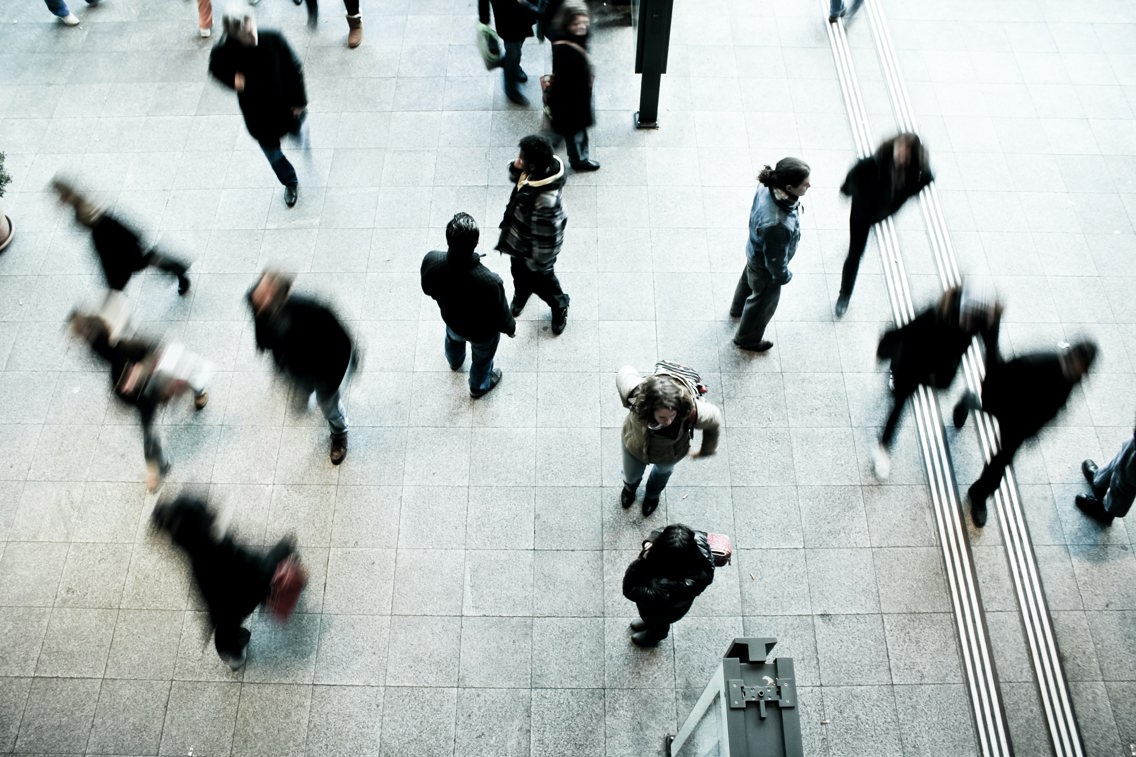Predicting your next move
-
Sist oppdatert
22. september 2021
-
Kategori
-
Tema
- Machine learning
- Human mobility
- Technology
We can address societal challenges and gain valuable business insights by predicting people's next move.
KNOWLEDGE @ KRISTIANIA: Human mobility
Crowds of people being on the road characterize our cities. Commuting to work, strolling as a tourist through the city, or heading for a leisure activity are just a few of our daily movements. Human mobility, i.e. the movement of individuals and groups in space and time, is largely driven by our work, social relationships, and leisure activities.
If we would observe the motions of crowds, human mobility may seem chaotic and random. However, our movements display a high level of regularity. To illustrate this, imagine drawing a line on a map connecting the origin and destination station each time you make a trip with public transport.
Over time, a pattern would emerge showing that your travel patterns are quite homogenous. Thus, we frequent a selected number of destinations on a regular basis.
- Read Also: The Innovation Issue: Kunnskap Kristiania (Link to E-magazine)
Human mobility has a strong impact on the societies we live in
Using statistical and machine learning methods, we are able to predict the whereabouts of people in the future. This provides us not only with a better understanding of human mobility, but it also has a direct impact on urban planning, traffic forecasting, autonomous driving and epidemiologic modelling, amongst many others.
For example, during a pandemic, we can assess and predict people’s mobility in response to movement restrictions, predict infection rates and evaluate the risk of local outbreaks. These insights can inform policymakers on necessary interventions as well as their future impact.
While accurate predictions of events are very useful, they are sometimes difficult to achieve. Predicting human mobility is no exception. Human behavior is heterogeneous and depends on many variables - such as the social network - that need to be considered.
More competitive with the aid of artificial intelligence
In contrast to the challenges of human mobility prediction, it is not difficult to predict that we are faced with major challenges in the future, such as the aging population, digitalization, and climate change.
With applications of artificial intelligence, we can become more competitive and maintain our welfare which is threatened by these challenges.
The European Commission's High-Level Expert Group on Artificial Intelligence (AI) defines artificial intelligence as “systems [that] act in the physical or digital dimension by perceiving their environment, processing and interpreting information and deciding the best action(s) to take to achieve the given goal. Some AI systems can adapt their behaviour by analysing how the environment is affected by their previous actions”.
Intelligent transport systems
Recently, the Norwegian digitalization minister Nikolai Astrup launched a national strategy on artificial intelligence. The mobility and transport sector have a particularly strong standing in this national strategy on artificial intelligence.
The advancement of intelligent transport systems and human mobility predictions have been named as two of the main pillars in advancing the mobility sector in Norway. The expansion of Internet of things-technology and access to anonymized metadata will further facilitate this ongoing endeavor.
Together with an industrial partner, fluxLoop AS, and public transportation providers, Ruter and Nordland county council, Kristiania University College is contributing to the advancement of the transportation and mobility sector in Norway. As part of an interdisciplinary research project at the intersection of mobility and information-/communication technologies we are contributing with expertise to guide the development of new ticketing approaches and business models in public transport and well as improving human mobility predictions.
The fundamental value of privacy
Drawing on methods and applications in artificial intelligence one can harness the vastly increasing amount of data to reveal new insights on human mobility. Cellular network or GPS data processed on mobile phones is predominantly used for human mobility predictions.
We work solely with anonymized data to hide and protect the identity of mobile phone users. In addition, exact locations information of mobile phone users never reaches the research environment but only rough information of a larger area a mobile phone user is in.
Overall, the multitude of emerging possibilities of human mobility prediction for society, health, and economy cannot be left unused in the future.
References:
This article is based on a collaborative research project (“Be-insight”) between the Mobile Technology Lab at Kristiania University College and fluxLoop AS and is funded by the Norwegian Research Council for a period of two years.
This article is first published in the Innovation Issue of Kunnskap Kristiania (link to E-Magazine), released on 19th of August 2021.
Text: Postdoctor Malte Bieler, School of Economics, Innovation and Technology, Kristiania University College.
Feedback:
We would love to hear your opinion. Send your comments and questions regarding this article by E-mail to kunnskap@kristiania.no.

